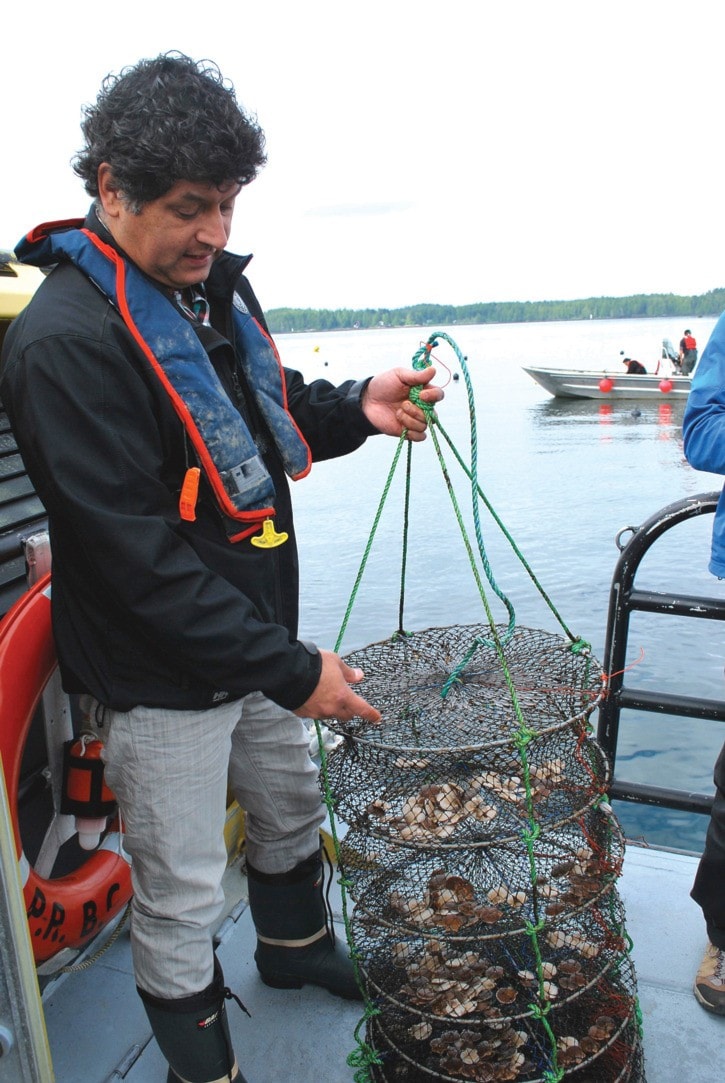Legal protection of the Great Bear Rainforest was introduced into legislation last week by the B.C. government and while forest management is on the tongues of policy makers, marine planning is the next step.
It took more than a decade for the Great Bear Rainforest Management Act to find its way through bureaucratic provincial channels. New forest management laws will come into force this summer to protect 85 per cent of the world’s largest temperate rainforest from loggers. The North Coast Marine Plan also seeks better ecosystem management and has been in the works since 2011.
The marine planning process involved 18 different First Nations groups, the provincial government and the North Coast Skeena First Nations Stewardship Society (NCSFNSS) — while the federal government declined to play a role.
“It was a crazy machine that happened over three years,” said Craig Outhet, the marine planning coordinator and co-lead on the North Coast map plan for NCSFNSS.
In April 2015, the B.C. government signed off on the Marine Planning Partnership (MaPP) to inform which activities can take place in marine areas around Prince Rupert and Kitimat. The plan protects and manages more than 102,000 square kilometres on the B.C. coast.
If someone wants to set up a floating fishing lodge they would go to the province to get permission, or tenure.
“Those tenure decisions have been going on for decades. What’s new is now the province has another tool that they are supposed to refer their people toward, which is the MaPP plan,” Outhet said.
Another nuance is that it’s a co-decision process between the province and First Nations. Both groups will receive and agree on tenure applications for marine areas. There was no marine spacial plan prior to 2015.
“Generally, it’s good practice to have resource management plans for both land and marine areas. The province has been doing land-use planning for decades, and a natural extension was to begin applying this to the marine environment,” said Greig Bethel, the media spokesperson for the ministry of forests, lands and natural resource operations.
The plan does not affect federal jurisdictions, such as shipping, commercial fishing and marine mammals. The federal government was originally involved in a North Coast marine plan in 2008 that was looking at protectionist measures from Alaska to North Vancouver, but the government abandoned ship in 2010. “MaPP came out of the ashes of that,” Outhet said.
There is hope that Justin Trudeau’s federal government will return to the table. During the Liberal election campaign in September, the party pledged to increase the amount of protected marine and coastal areas from 1.3 per cent to 5 per cent by 2017 and 10 per cent by 2020.
Other Liberal promises include working with the province, First Nations and other stakeholders to co-manage the oceans, to formally ban crude oil tanker traffic on the North Coast and restore $40 million that the previous government cut from the federal ocean science and monitoring program.
The federal budget is expected to be released on March 22, providing an insight into traction on the Liberals’ election promises.
The World Wildlife Fund (WWF) welcomes the North Coast marine plan and the precautionary approach on how resources are used. The downside, as Mike Ambach of Prince Rupert WWF sees, is the lack of engagement by federal authorities.
“They’ve been on the edge of discussion — at best — on integrated oceans planning, which is a bit ironic really because the entire thrust towards managing our oceans in a more integrated and holistic fashion was actually spearheaded by the federal government, at one level, through the Oceans Act and the Oceans Action Plan,” Ambach said, who was involved in developing the North Coast marine plan.
Both federal marine plans were introduced in 1996 and 2004, with intentions to establish new networks of marine protected areas, yet the government did not participate in the North Coast marine plan.
Change is occurring to the terrestrial and marine environments along the B.C. coast with or without federal commitments. While the Great Bear agreement was driven by forestry concerns, Ambach said the marine plans are more holistic and don’t relate to only one impact.
“The marine environment is certainly a very complex environment given that it’s liquid,” he said. “It contributes to a broader transformation that is occurring on the B.C. coast and that is transforming how we relate to natural resources and how decisions are made.”
After the Great Bear agreement was announced, Skeena-Bulkley Valley MP Nathan Cullen spoke on the potential for the feds to finally do some planning around the marine system.
“The previous governments have been dragging their heels for years,” Cullen said. “I think a little less than one per cent has actually been achieved so lots of work to be done and I think the Great Bear shows the model of a way forward.”
